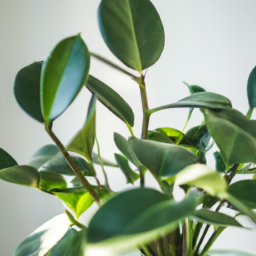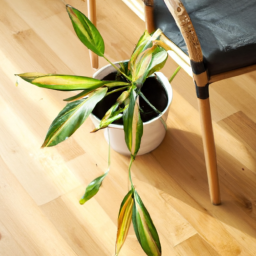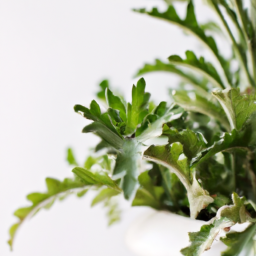
Are you looking to bring a little greenery into your home but not sure where to start? In this blog post, we’ll be discussing different plant types indoor that are perfect for adding a touch of nature to your living space. Whether you’re a seasoned plant parent or a beginner looking to dip your toes into the world of indoor gardening, we’ve got you covered. So grab a cup of tea, sit back, and let’s explore the wonderful world of indoor plants together!
The Best Types of Plants for Indoor Spaces
Choosing the Right Plants for Your Indoor Space
When it comes to selecting plants for your indoor space, there are a few key factors to consider. First, think about the amount of natural light that is available in the area where you plan to place your plants. Some plants thrive in bright, direct sunlight, while others prefer lower light conditions. It’s important to match the light requirements of the plants with the light levels in your space to ensure they will thrive.
Another important factor to consider is the size of the space where you plan to place your plants. Some plants, such as large floor plants or hanging plants, require more room to grow and spread out, while others, like small succulents or air plants, can thrive in smaller spaces. Make sure to choose plants that will fit comfortably in the area where you plan to place them.
Lastly, consider the amount of care and maintenance that you are willing to provide for your plants. Some plants require more frequent watering, pruning, and fertilizing, while others are more low-maintenance and can thrive with minimal care. Choose plants that fit your lifestyle and schedule to ensure they will flourish in your indoor space.
The Best Plants for Low Light Conditions
If you have a space in your home that receives minimal natural light, there are still plenty of plant options that can thrive in low light conditions. Some of the best plants for low light include:
– Snake Plant: Also known as mother-in-law’s tongue, the snake plant is a hardy plant that can thrive in low light conditions. It has tall, upright leaves that come in a variety of shades of green and yellow.
– ZZ Plant: The ZZ plant is another low light favorite, with glossy, dark green leaves that add a touch of elegance to any space. It is also known for its air-purifying qualities.
– Pothos: Pothos plants are easy to care for and can thrive in low light conditions. They have long, trailing vines with heart-shaped leaves that come in a variety of colors, including green, golden yellow, and variegated.
These are just a few examples of plants that can thrive in low light conditions. Make sure to research the specific light requirements of any plant you are considering to ensure it will thrive in your indoor space.
The Best Plants for Bright, Direct Sunlight
If you have a sunny spot in your home that receives plenty of bright, direct sunlight, there are also plenty of plant options to choose from. Some of the best plants for bright, direct sunlight include:
– Succulents: Succulents are a popular choice for sunny spots, as they are drought-tolerant and thrive in bright, direct sunlight. They come in a wide variety of shapes, sizes, and colors, making them a versatile option for any space.
– Cacti: Cacti are another great option for sunny spots, as they are well-suited to hot, dry conditions. They come in a wide range of shapes and sizes, from small, round cacti to tall, columnar varieties.
– Spider Plant: Spider plants are known for their long, arching leaves and small white flowers. They thrive in bright, indirect sunlight but can also tolerate some direct sunlight.
These are just a few examples of plants that can thrive in bright, direct sunlight. Make sure to research the specific light requirements of any plant you are considering to ensure it will thrive in your indoor space.

Low-Maintenance Indoor Plant Varieties
Welcome to our guide on low-maintenance indoor plant varieties! If you’re looking to add some greenery to your home or office without the hassle of constant care and attention, you’ve come to the right place. In this article, we’ll explore a variety of plant types that thrive indoors with minimal effort on your part. Let’s dive in!
Spider Plant
The spider plant, also known as Chlorophytum comosum, is a popular choice for indoor spaces due to its easy care requirements and air-purifying qualities. This plant features long, arching leaves that can grow up to several feet in length. Spider plants prefer bright, indirect light and should be watered regularly but allow the soil to dry out between waterings to prevent root rot.
One of the spider plant’s most appealing characteristics is its ability to produce “babies” or offshoots, known as spiderettes, which can be easily propagated to create new plants. Simply cut off the spiderette and place it in a pot of soil to encourage root growth. With proper care, spider plants can thrive for many years, making them an excellent choice for beginners and experienced plant enthusiasts alike.
In addition to their aesthetic appeal, spider plants are known for their air-purifying properties, helping to remove toxins such as formaldehyde and xylene from indoor spaces. This makes them a great choice for improving air quality in your home or office while adding a touch of natural beauty.
Snake Plant
The snake plant, also known as Sansevieria trifasciata, is another low-maintenance indoor plant variety that is perfect for busy individuals or those with a less-than-green thumb. This plant features tall, upright leaves that come in a variety of patterns and colors, making it a versatile choice for any indoor space.
Snake plants are incredibly resilient and can tolerate low light conditions, making them ideal for rooms with limited natural light. They also have a unique ability to convert carbon dioxide into oxygen at night, making them an excellent choice for bedrooms or other areas where air quality is a concern.
When it comes to care, snake plants prefer to dry out between waterings and should be placed in well-draining soil to prevent root rot. They are also relatively pest-resistant, making them a hassle-free option for those looking to add some greenery to their indoor spaces without the worry of constant maintenance.
Pothos
Pothos, also known as Epipremnum aureum, is a versatile and easy-to-care-for indoor plant variety that is perfect for beginners and experienced plant enthusiasts alike. This plant features heart-shaped leaves that come in a variety of colors, including green, golden yellow, and variegated patterns.
Pothos plants are incredibly adaptable and can thrive in a wide range of light conditions, from bright, indirect light to low light. They prefer to dry out between waterings and should be placed in well-draining soil to prevent root rot. Pothos plants are also known for their air-purifying qualities, helping to remove toxins such as formaldehyde and benzene from indoor spaces.
One of the pothos plant’s most appealing characteristics is its ability to grow quickly and trail gracefully from hanging baskets or shelves. This makes them a popular choice for adding a touch of natural beauty to any indoor space while requiring minimal care and maintenance.

Popular Indoor Plant Types for Bright and Low-Light Environments
Choosing the Right Indoor Plants for Your Home
When it comes to choosing indoor plants for your home, it’s important to consider the lighting conditions in each room. Some plants thrive in bright, direct sunlight, while others prefer low-light environments. By selecting the right plants for your space, you can create a lush and vibrant indoor oasis that will brighten up any room.
If you have a room that receives plenty of natural light, you may want to consider plants that thrive in bright, direct sunlight. Some popular options include succulents, such as aloe vera and jade plants, which are known for their ability to thrive in sunny conditions. Other options include spider plants, rubber plants, and peace lilies, all of which can add a touch of greenery to your space.
For rooms that receive less natural light, there are still plenty of indoor plant options to choose from. Plants that do well in low-light environments include pothos, snake plants, and ZZ plants, all of which are known for their ability to thrive in dimly lit spaces. These plants are not only easy to care for but can also help purify the air in your home, making them a great choice for bedrooms and other areas with limited sunlight.
Caring for Your Indoor Plants
Once you’ve selected the right indoor plants for your home, it’s important to properly care for them to ensure they thrive. One of the most important factors to consider is watering. Overwatering can be just as harmful as underwatering, so it’s important to find the right balance for each plant. Most indoor plants prefer to dry out slightly between waterings, so be sure to check the soil moisture before watering.
In addition to watering, it’s important to provide your indoor plants with the right amount of light. Plants that require bright, direct sunlight should be placed near a south-facing window, while those that prefer low-light environments can thrive in more shaded areas of your home. If you notice your plants are not thriving, try moving them to a different location to see if they do better in a different lighting situation.
Finally, be sure to regularly inspect your indoor plants for pests and diseases. Common issues include spider mites, aphids, and mealybugs, all of which can be treated with insecticidal soap or neem oil. By staying vigilant and addressing any issues promptly, you can help your indoor plants stay healthy and vibrant for years to come.
Creating an Indoor Plant Oasis
With the right selection of indoor plants and proper care, you can create an indoor plant oasis that will brighten up any room in your home. Consider mixing and matching different plant types to create a diverse and visually appealing display. Hanging plants can add a touch of greenery to high shelves or ceilings, while larger floor plants can make a statement in empty corners.
In addition to traditional potted plants, consider incorporating air plants, terrariums, and succulent gardens into your indoor plant collection. These unique plant types can add a touch of whimsy and creativity to your space, making it truly one-of-a-kind. By experimenting with different plant types and arrangements, you can create an indoor jungle that will bring joy and tranquility to your home.
Here’s what we learned
Indoor plants are a great way to bring the beauty of nature into your home while also improving air quality and reducing stress. There are several types of plants that thrive indoors, each with their own unique characteristics and care requirements. Some popular options include succulents, which are known for their low maintenance and ability to store water in their leaves, making them ideal for forgetful or busy plant owners. Another popular choice is the spider plant, which is easy to care for and helps to purify the air by removing toxins like formaldehyde and xylene.
Ferns are another great option for indoor plants, as they thrive in low light and high humidity environments, making them perfect for bathrooms or kitchens. If you’re looking for a plant that adds a pop of color to your space, consider a flowering plant like an orchid or peace lily. These plants not only brighten up a room with their blooms but also help to improve air quality by removing pollutants. No matter what type of plant you choose, bringing a little piece of nature indoors can have a positive impact on your overall well-being and create a more inviting and peaceful atmosphere in your home.
Here are the top questions that we were asked:
Q1: What are some common types of plants that thrive indoors?
A1: Some common types of plants that thrive indoors include pothos, spider plants, snake plants, peace lilies, and succulents. These plants are known for their ability to adapt to indoor environments and require minimal maintenance.
Q2: What are the benefits of having indoor plants?
A2: Indoor plants not only add beauty and aesthetic appeal to your space but also have numerous health benefits. They can help purify the air, reduce stress, boost mood, and improve overall well-being.
Q3: How can I choose the right indoor plants for my space?
A3: When choosing indoor plants, consider factors such as the amount of light available in your space, the level of maintenance you are willing to provide, and your personal preferences in terms of plant size and appearance. It’s also important to research the specific care requirements of each plant before making a selection.
Q4: What are some low-maintenance indoor plant options for beginners?
A4: If you’re new to indoor gardening, consider starting with low-maintenance plants such as pothos, spider plants, or snake plants. These plants are resilient and can thrive in a variety of conditions, making them perfect for beginners.
Q5: How can I care for my indoor plants to ensure they thrive?
A5: To ensure your indoor plants thrive, make sure to provide them with adequate light, water, and humidity. Regularly check the soil moisture, trim any dead leaves or stems, and fertilize as needed. Additionally, be mindful of any pests or diseases that may affect your plants and take prompt action to address them.
Dr. Olivia Green is a botanist with over two decades of experience in indoor plant cultivation. She holds a Ph.D. in Plant Biology and has dedicated her career to researching plant behavior in controlled environments. Dr. Green is passionate about helping plant enthusiasts master the art of indoor gardening through her extensive knowledge and practical insights.


